Main Time class page
ITPG-GT 2040 – 001 (23548) Tuesdays 3:30pm – 6:00pm
- Important Scheduling Note
- Student Documentation
- Office Hours
- Deliverables
- Assignments
- Readings
- Syllabus
- Class 01, September 14: The Gnomon
- Class 02, September 21: Time Machines 1
- Class 03, September 28: The Ecliptic
- Class 04, October 5: Existing in Time
- Class 05, Week of October 11 (Asynchronous): Cepheid Variables
- Class 06, October 19: Time Machines 2
- Class 07, October 26: Midterm Presentations I
- Class 08, November 02: Time Dilation Midterm Presentations II
- Class 09, November 09: From Data To Meaning
- Class 10, November 16: Final project concept presentations
- Class 11, November 23: The Copernican Principle
- Class 12, November 30: Time Protocols
- Class 13, December 7: Workshop
- Class 14, December 14: Final class
- Class Policies
Important Scheduling Note
Because of an unavoidable conflict, I have to delay our first class. We will not be meeting September 7th as originally scheduled. However, in order to give a sense of the class and get things moving, I’ve recorded a class introductory video:
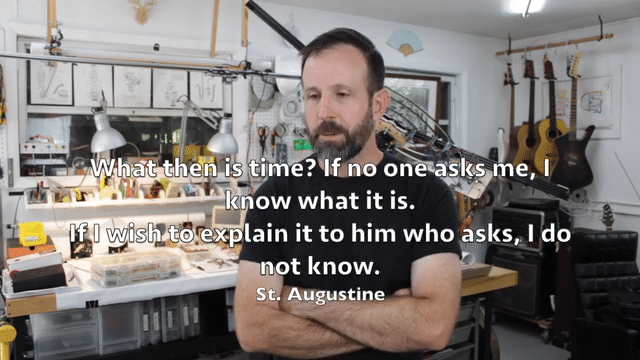
I also will be hosting some drop-in zoom sessions before our first in-person meeting, for you to come by, meet me, introduce yourself, and get a better sense of the class. Our first in-person meeting will be Tuesday September 14.
Finally, I will use the week of October 11th to provide a virtual make-up class. The university calendar uses Tuesday October 12 as a “Monday”, so normally we would miss class that week. I will provide my lecture material as an asynchronous video and schedule open zoom sessions for people to drop in.
Student Documentation
As is typical at ITP, please document your work for this class online. Set up a URL that shows only work for this class – if you’re using a blog, have a tag or category for the class, for example. Document early and often – more frequent rough-draft posts are better than fewer super polished ones, and help me understand your progress in the class. A list of student links will go here:
Office Hours
I have an NYU office hour calendar and will be posting hours there when the semester begins.
Deliverables
An overview of what is due when. For more detail, see Assignments and Readings
- Weekly: attendance and participation, respond to prompts and readings for the following week.
- Between weeks 2 and 7 (9/21 and 10/26): Complete four digital sketches that explore ideas of time.
- UPDATE: Week 7 (10/26) and Week 8 (November 2): Midterm presentations – observational instrument
- Week 10 (11/16): Final concept presentations
- Week 14 (12/14): Final presentations
- Weeks
9, 10, 11 and 12: Past present and future discussion groups in class - Dates TBD: Reading discussions
Assignments
Four Digital Sketches, first half semester
Presented online and in class throughout weeks 2-7
During the first half of the semester, you will finish four time-based “sketches”: small assignments you can use to explore an idea, support your midterm or final concepts, and generally sharpen your thinking about time. “Sketch” here is used very loosely, to allow for a lot of flexibility based on your skill set, available tools, interests etc. Look for inspiration in the syllabus, readings, discussions, or your prior experience. Almost any imaginable (thoughtful!) activity could be a sketch – but I recommend limiting the time spent to between a few hours and a day or two. These are meant to be small assignments that keep you engaged with the material.
Post on your blog approximately every 1-2 weeks so that four are finished before the midterm. Starting in week three we will use some class time to review any sketches completed by that point.
Constraints. Sketches should be in a square digital format posted online. These could be software, digital media files (e.g. video), or if working with hardware, a square video or animated gif that captures the essence of the hardware sketch.
Square means the width is the same as the height. (I have a thought it might be nice to tile the total set of sketches on a display somewhere.)
Types of sketch. It will be gratifying if we have a similar set of pieces to compare and contrast. Consider the following suggestions:
- – Non-computational media (actual paper sketch, model, sculpture, etc.) captured as video.
- – Timelapse (>12 hours) or slo-mo (<12 seconds) video.
- – Software sketch – something you might do for computational media weekly assignment.
- – Hardware sketch – something you might do as a physical computing lab.
This P5 sketch is a simulation of the Botta Uno 24, one of a variety of one-handed watches designed by Klaus Botta starting in 1986. This is an example of a software sketch (source) I made that ends up about, lets say, 70/30 design/code. For time-specific code, it uses Javascript Date object (not the newest one, the standard Date), adds a UTC offset and a few other timezones, and modifies the draw loop with a setTimeout callback, since the animation rate for a watch can be super slow. Design-wise, the layout of the watch face is done in code and acts as a kind of design study of the piece. Every dimension is specified in proportions so the sketch can scale like a vector. (BTW the $500 watch is built around a $20 24-hour 515.24 quartz movement by Ronda.)
Midterm: Observational Instrument
UPDATE: Presented week 7, October 26 and week 8, November 2
The term “gnomon” refers to the shadow-casting element of a sundial, but also means “one that knows or examines”, with the prefix ‘gno’ coming from the Proto-Indo-European language root for knowledge. One who studies the shadows cast by a gnomon gains knowledge of the world.
Humans forever have been inspired by patterns in the movement of stars, planets, the moon and sun; tides, seasons, animal migrations and the blooming of plants. Inspired by astronomical instruments (among other things), select a phenomenon important to you that varies with time. This could be natural, artificial, or a combination; it could span less than a second or more than years. Devise a system (software, hardware, or both) that reflects, records, illuminates and/or amplifies the changing of the phenomenon. To be presented in class October 26, week 7.
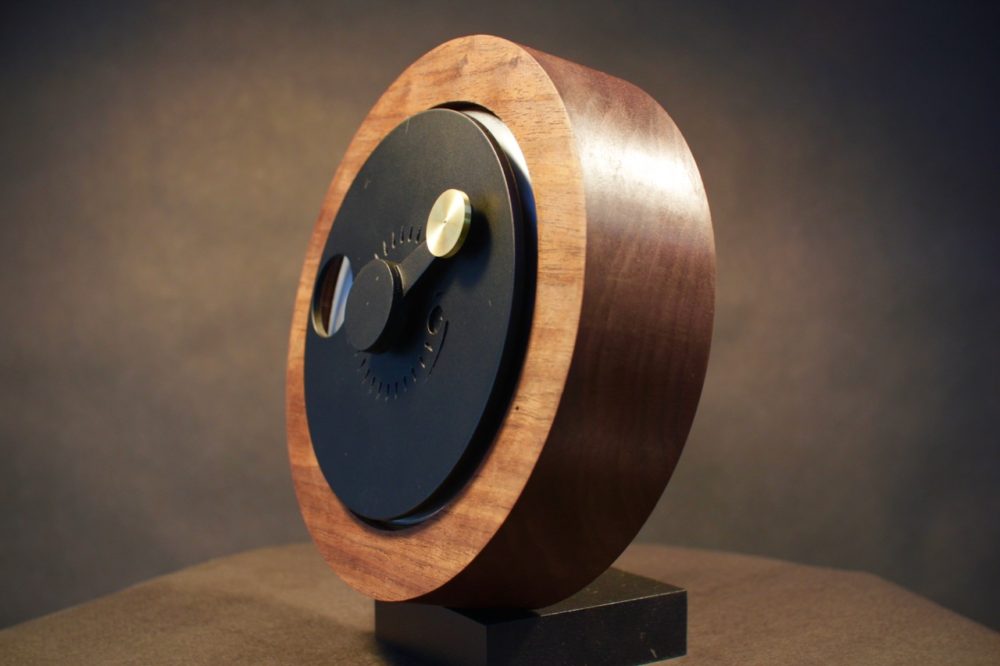
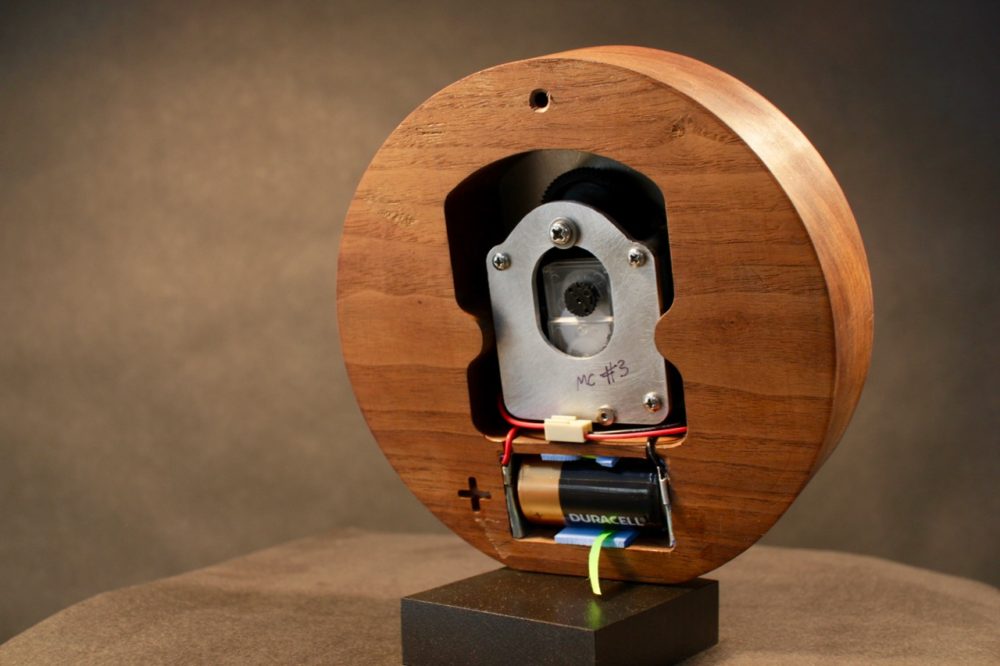
I’ve made several moon clocks, such as the one pictured above. (Video here and here). It might be somewhere between a midterm and final project in this class. The basic mechanism was prototyped in several ways: one version running a tide clock at half speed with a microcontroller, and another frankensteining together a stock 24 hour and tide movements, which worked better. The end products have a degree of finishing more like a final project – carefully machined aluminum and wood parts, turned-brass sun indicator, a nice finish on the walnut, etc.
(The moon clock also exists in sketch form as an online tool for setting the clocks. It uses suncalc to show the correct position for the sun and moon indicators.)
Affinity group discussions: Past Present and Future
Group discussions in class. Past: Week 9 (11/9) Week 10 (11/16) Present: Week 11 (11/23) Future: Week 12 (11/30)
New this year I want to try the following: student lead discussions based loosely around the topics “Past”, “Present” and “Future”. Early in the semester I will divide the class into these groups. On a specific week in the second half of the semester, each group will have a chance to lead a discussion on that theme, drawing on readings and lectures from class and brining in additional materials. Past: Week 9 (11/9) Week 10 (11/16); Present: Week 11 (11/23); Future: Week 12 (11/30)
Final Project
Due in class week 14, December 14.
I believe constraints make for good work, but I also feel the first two projects (the instrument, the sketches) are already reasonably constrained. So for your final project, I ask you to create the constraints yourself, as long as the project is related to Time and demonstrates creative and technical excellence. I will check in with you throughout the semester (in and out of class) to discuss progress towards final projects. Elaborating on an earlier project – say, one of your sketches – is perfectly fine, as is working in groups up to three people (larger, please see me).
Documentation
Each assignment and the sketches will have documentation online posted when the project is due. What this is will depend in part on what you choose to create – it could be a video of the project working, and/or a write up of your process and thoughts on the work. Discuss with me if you have any questions.
Readings
We’ll be reading Carlo Rovelli’s small, beautiful book, The Order of Time.
In previous classes I’ve assigned Jay Griffiths’ wide-ranging and thought-provoking work A Sideways Look At Time (also known as “Pip Pip” in the UK for some reason). This book covers everything outside the scientific efforts to measure time: time in politics, power, culture, gender, and more. I recommend it, but no longer require it, as it seemed to alienate some students while exciting others. As part of a more general set of readings I will share sample text from the book, and ifyou like what you see I recommend reading further.
I will augment the Rovelli with a collection of readings linked throughout the syllabus. I may also add links to specific smaller readings (articles, papers, etc) in the syllabus based on what comes up in class discussions.
Throughout the semester I am likely to use slides to illustrate points, guide discussions, and generally help me organize the material I want to cover in each class. These will rarely function as stand alone documentation; however, there may be instances where they can serve as useful references, in which case I will share them with the class. If anyone has difficulty seeing the material in class or accessing it when shared, please let me know so we can work out how best to get the material to you. You can see last year’s slides from that syllabus; I may modify or update these as I prep material for this year.
Syllabus
Below is an outline; details will be filled in as the semester progresses.
Class 01, September 14: The Gnomon
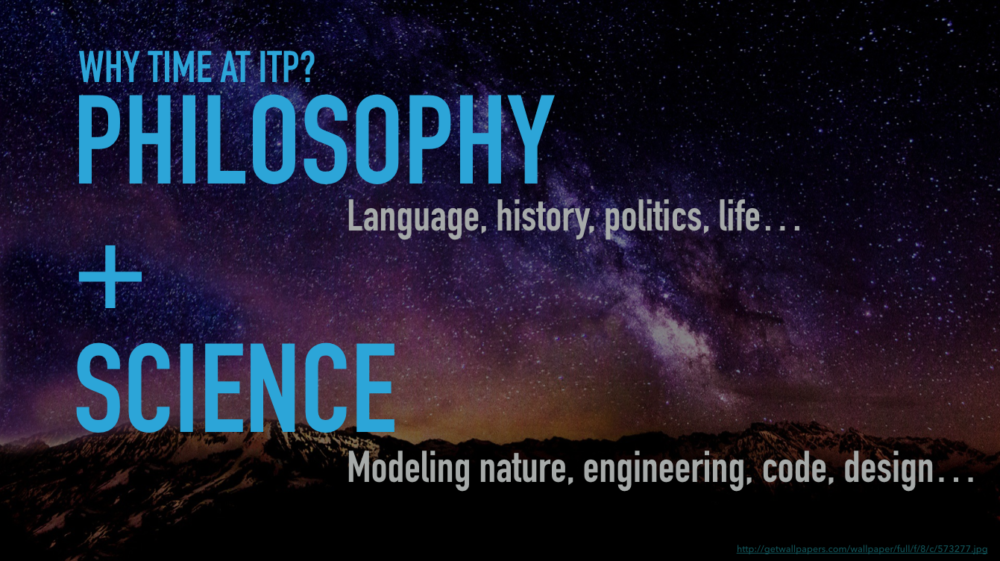
- Introductions
- Overview, big ideas, skills, reasons for the class
- Expectations, assignments, schedule
- Gnomon
- Break
- Group activity: Human Planetarium
Working in teams, we will make a human planetarium. We will learn about the location of objects in the sky and create markings or pointers towards them.
- Team Ecliptic
- Team Venus and Jupiter
- Team Sun and Moon
- Team Polaris and Vega
Resources: Stellarium, Suncalc and Mooncalc. Make sure to set location to 370 Jay Street, and time to 6PM EDT today. Find coordinates as Azimuth and Altitude or Elevation (as opposed to Right Ascension and Declination). Use compass and level apps to find direction towards sky object. Use anything (paper + tape, your arm, anything) as pointers.
- For next class:
- Get the Rovelli reading
- Set up documentation
- Review hardware and software resources
- Brainstorm sketches and instrument, post observation instrument concept to your blog
Upcoming: Autumnal Equinox September 22
Class 02, September 21: Time Machines 1

An overview of practical resources for the class: timing motors and clock movements; electronics for timekeeping; microcontroller architecture, software techniques.
We’ll also review observation instrument ideas.
In-class agenda:
- Activity: Which way is (your) time?
- Discussion – Observational Instrument proposals
- Break
- Overview – useful hardware and software for this class. Guest – Arnab from everything ITP (current Ability Lab artist, former Resident, member of the first Time class).
For next week:
- Complete and post at least one of your four sketches.
- Continue developing observational instrument. Focus on finalizing the concept, and identifying any long-lead-time items that need to be tested or
- Begin Rovelli reading, Part I, The Crumbling of Time
- Listen to Sean Carroll’s interview with cognitive scientist Lera Boroditsky about language and time (youtube audio if you prefer)
Bonus – check out all the weird clocks (and orreries!) artist Tim Hawkinson has made with off-the-shelf quartz movements.
A few more software examples:
- Most-basic clock template
- Another basic clock with sweep milliseconds (based on Tom’s from the ITP Clock Club Repo)
- Design study for a nonlinear clock
- Day/night length using suncalc
- Design studies of the Nomos Neomatik and Botta Uno 24
Class 03, September 28: The Ecliptic
The reason for the patterns of motion in the stars and planets.
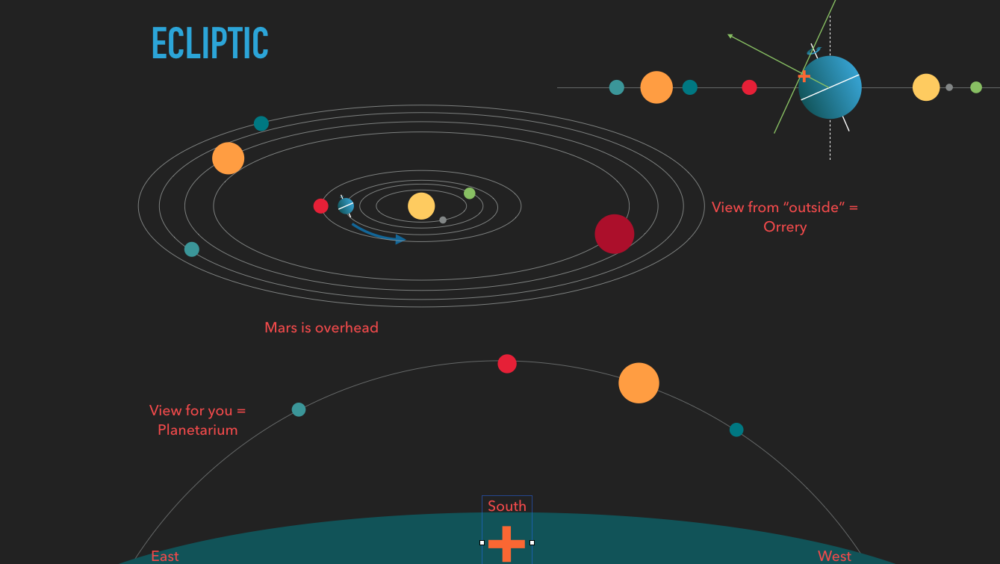
- General Time discussion
- Review sketches posted so far
- Discuss midterm observation instrument ideas
- Presentation: The Ecliptic (in three parts)
- The Earth and the Sun
- The Planets
- The Stars
- For next class:
- Continue working on sketches (ideally, you will have one completed by now, 2-3 by week 5, and all 4 by class 7).
- Next week I will be demoing software time tools in P5js and Arduino (and maybe Processing). Browse around one or more of the software tools (or find others not on the list) so you can follow along.
- Bonus: See if you can decode the time messages in the Voyager Golden Record
Class 04, October 5: Existing in Time
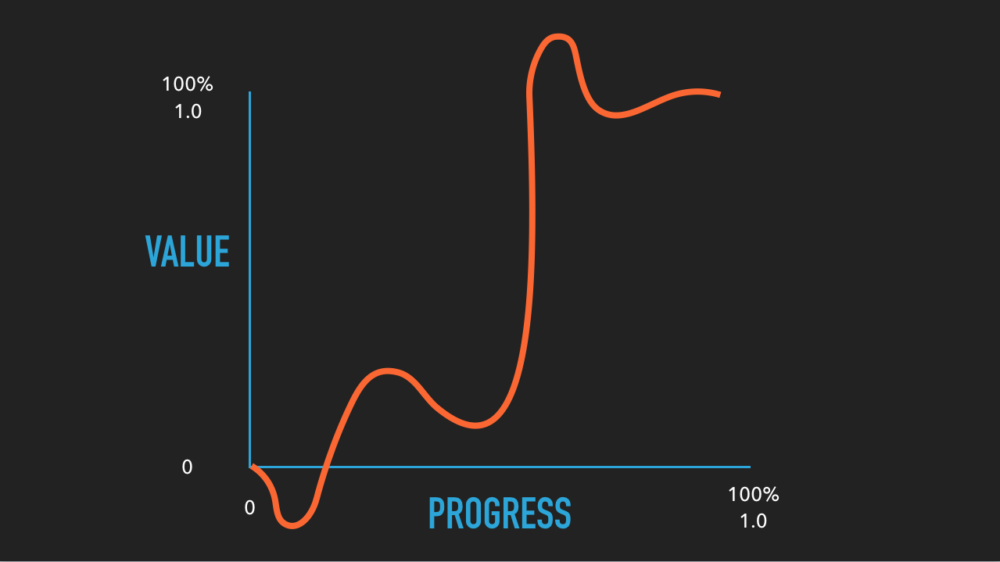
Time in computational media, and the two crucial software patterns for crafting generative experiences in time, as well as a reflection on simulation.
Libraries referenced will include Tasker and Ramp for Arduino; and Greensock and Func for JS.
Demo videos from 2020 (private for class, password is orrery). Ramp, Tasker, Next Level
P5 examples we might look at:
- This one is barely a program. But still – frameRate and frame deltas.
- A simple Greensock template with a few easings and a timeline. (Here’s an older leaner version.)
- One of the easing demos included with Func.
- The basics of setTimer and setInterval in JS.
- A zip of the Arduino code with Ramp and Tasker examples.
For next week:
- Continue sketches – finish 3rd or 4th.
- Continue execution of the midterm observational instrument.
- Continue Rovelli reading – finish section 2 by next class.
- In keeping with the Sean Carroll theme and this weeks mention of music, listen to his excellent interview with Wynton Marsalis (at least the first 1/2 hour).
Class 05, Week of October 11 (Asynchronous): Cepheid Variables
Note: NYU runs a make-up Monday schedule on Tuesday 10/12, so normally we sould not meet this week. However, due to my conflict in week 1, I will use this week to present the normal materials asynchronously and meet with you via zoom. Details to follow.
The history of ideas about the size of the universe, and how a clock in the sky helped us climb the cosmic distance ladder.
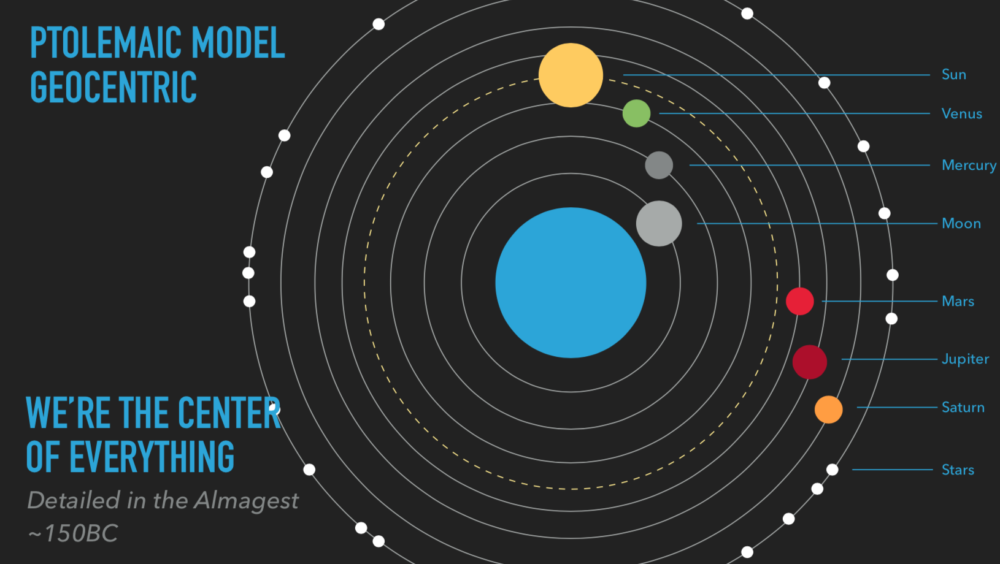
For this asynchronous class, here are video versions of the discussion I would normally have.
For next week:
- Continue sketches and midterm.
- Finish Rovelli. We will discuss in class next week.
Class 06, October 19: Time Machines 2
Timing in physical computing. Interrupts, timers, and RTCs.
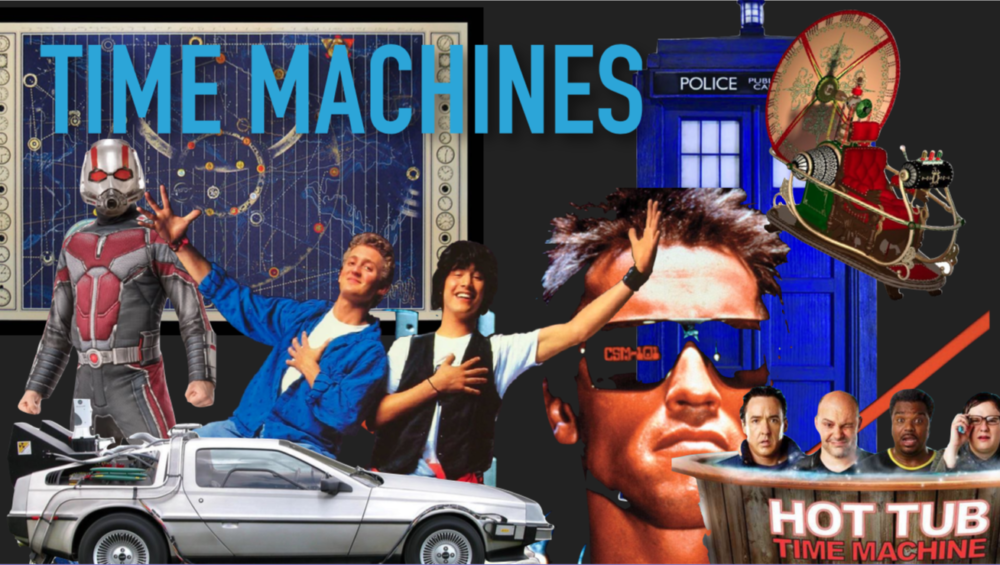
In class:
- 9 Beet Stretch
- Rovelli Class discussion
- Hardware for time
For next week: Finish midterm Observational Instruments.
Class 07, October 26: Midterm Presentations I
Class 08, November 02: Time Dilation Midterm Presentations II
Second week of midterm presentations. With any remaining time, Galileo, Newton, Maxwell, and Einstein.
Class 09, November 09: From Data To Meaning
Catch up on Relativity from last week; consider the Symbol Grounding Problem as it relates to the simplest possible button project. Briefly look at classic time-based art.
For next week:
- Document the plan for your final project. Post on your blog:
- Project Title (or code name)
- One-sentence project concept
- One-paragraph description
- Napkin sketch
Note for finals: Expanding on sketches or midterm is fine; so is working in groups.
2. Read the excerpt online from Jay Griffiths’ Pip pip (aka A Sideways Look at Time)
Class demo: Deriving insight from time-series information. How does code “know” something? Even a simple button, considered in time, can pose an epistemological challenge. In the first example below (any microcontroller with a single button input) the timing of presses and releases are quantified to create increasingly subtle judgements about what the presses “mean”. (Note, these are from 2020 and may be updated prior to presenting in 2021).
In the second example, fast, noisy input is tamed in a variety of waves such as peak-and-hold detection and exponentially weighted averaging. Using methods like these, you might be able to derive more semantic meaning from raw data (“rapidly increasing”, “slowly decreasing”, “stable” etc). Beyond these, you might use ML to classify data, although that shifts the question of meaning elsewhere (who trained the classifier?).
Class 10, November 16: Final project concept presentations
Review all final project ideas (reading from blog documentation).
The Past Discussion Group. Stuti, Shin, Junoh, Kevin, Vivien, Jason
Class 11, November 23: The Copernican Principle
Look at attempts to reason about where we might be in time.
The Present Discussion Group. Todd, Natalie, Jung, Dalit, Jezzy
Class 12, November 30: Time Protocols
From Julian Days and Unix Time to GPS.
The Future Discussion Group. Shannon, Phil, Bowei, Philip, Alan, John
Class 13, December 7: Workshop
Workshop in support of the final. Individual/project meetings.
Class 14, December 14: Final class
Class Policies
Grading
The most important thing you can do is arrive to each class on time and be prepared to actively, civilly participate with your peers and engage with the material. Please put your best effort into assignments and readings, and keep a record of your work online. ITP is pass fail, but the equivalent of a B or higher is required to pass.
- 20% In-class work and participation, readings, discussions.
- 20% Observational Instrument
- 20% Sketches
- 30% Final project
- 10% Documentation
Participation & Attendance
On-time attendance and active participation required. Arrival later than 15 minutes after our start time is an absence. If you must miss any class, or will be unable to attend at a certain time, let me know asap. Feel free to use devices to fact-check me in real time; but screens away when your peers are addressing the class.
Personal Device Use
Please limit other software to what is helpful for the class and, especially when your fellow students are speaking, give them your undivided attention.